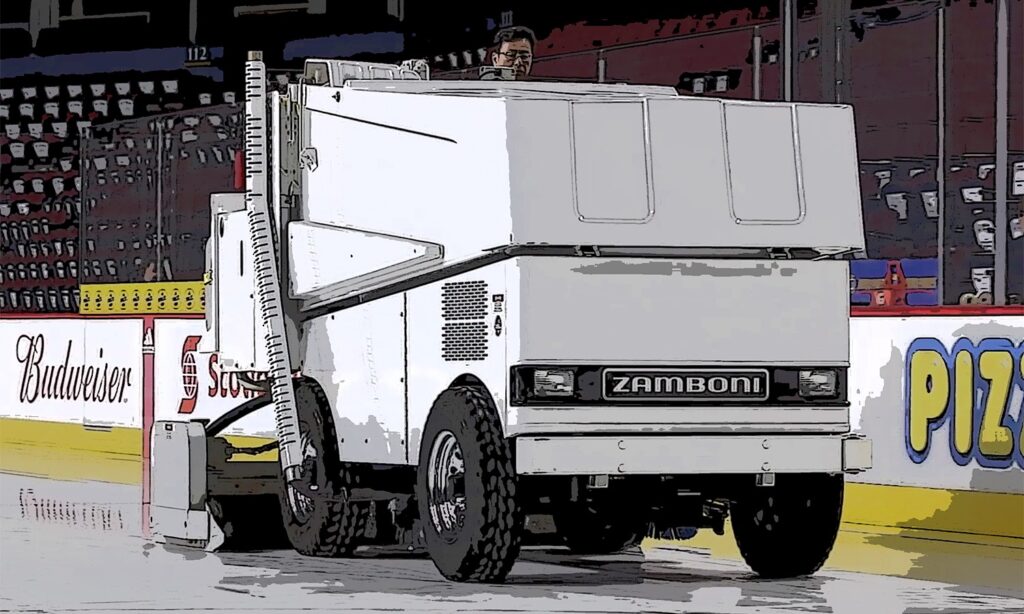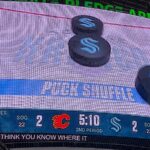The NHL introduced the intermission to resurface the ice in between periods and allow for players to rest.
As the NHL grew in popularity on TV, the time was used by the broadcasters to feature in-game analysis such as Coach’s Corner with Don Cherry.
Surprisingly, there is a common question among TV viewers. They want to know how long the intermission is between periods. Maybe that’s because they want to:
How long are NHL intermissions?
As stated in the 2023-24 NHL Rulebook, intermissions are 18-minutes long for all NHL regular season games. The intermissions take place at the conclusion of the 1st and 2nd period. During the playoffs, the intermissions that precede the overtime period(s) are 15-minutes long. Lastly, there are no intermissions before regular season overtimes or subsequent shootout.
You'll come across other posts mentioning 15- or even 17-minute intermissions. But the 2023-24 NHL rulebook (section 34.2) clearly mentions 18 minutes.

Depending if you are attending the game or watching it on TV, the intermissions are used for the following purposes:
Resurfacing of the ice
As mentioned earlier, the intermission time is used to resurface the ice for optimal playing conditions.
The 18-minutes mostly allows for the Zambonis (usually x2) to clean the ice, followed by the ice cleaning crew to mop away the any puddles and allow the surface to dry.
Player Breaks and Team Regroup
Players and coaches are returned to their respective dressing rooms so they can basically rest up between periods. In addition, the team coaches discuss strategies to change the course of the game and regroup their players.
Spectator Breaks: Food, Beverages and Bathroom
Spectators can use the time to restock up on food and beverages as the game length in real-time is 2.5+ hours long. Since many spectators enjoy drinking alcoholic beverages, the need for the bathroom break is essential. If you’ve ever attended any sporting event, especially a hockey game, the bathrooms get extremely packed during the breaks.
Advertisements
For viewers watching the game at home, the league uses the intermissions to advertise their sponsors through commercials.
This is in addition to the scheduled TV timeouts during each period.
Typically, networks want to squeeze in 15-minutes of commercials per hour which they mostly play during intermissions.
Officially, the intermission begins once the last official (referee) leaves the ice.
That is, the intermission clock commences once all players and officials are off the ice surface and not when the game clock hits 00:00.
History of NHL Intermissions
As of the 1927-28 season, NHL games standardized at 3x20 minute periods and 10-minute intermissions.
In the 1947-48 season, the NHL introduced sudden death overtime periods which also included 10-minute intermissions.
By the 1966-67 season, the intermissions were extended to 15 minutes.
Following then, intermissions were 17-minutes for all nationally televised games or 15 minutes 30 seconds at a minimum (for all other games).
Finally, the league settled on 18-minute intermissions after periods 1 and 2.
During the regular season, a short 2-minute precedes the 5-minute overtime period.
And in the playoffs, any intermission after the 3rd period are 15-minutes in length.
That’s overtime in playoff games are just like regulation periods (20 minutes each), except they are sudden death.
For a summary of all the NHL changes made, including intermissions, check out the official source here.
Sudden death is the hockey term for: next team to score wins the game.
As you can imagine, some games can go on for several overtimes before we have a winner.
To learn more about how long a hockey game lasts, make sure to check out my blog post here.
Final Thoughts
While writing this blog post, I was originally under the impression that intermissions were 17-minutes long.
But when I looked up the official rule book again, to my surprise, the NHL had recently changed it to 18-minutes.
Another fun fact I came across is that the intermissions only begin once the last official leaves the ice rather than when the game clock hits 00:00.
Which makes sense, because there are times that teams get into scuffles at the end of a period, which may also result in penalties being called.
Considering I’ve been a lifelong fan of hockey, I never paid attention to when the intermission countdown clock begins, especially while attending the games in person.
Lastly, when the subsequent period is about to start, you’ll see the referees return to the ice first, followed by the players about a few minutes before the match resumes.
Whatever the main reason was to set intermissions at 18 minutes, it definitely benefits the fans in attendance.
First off, they get to watch revitalized players performing at their peak each period.
And secondly, these very same fans get to enjoy refreshments, shop memorabilia and are provided with other forms of entertainment these lengthy breaks.






